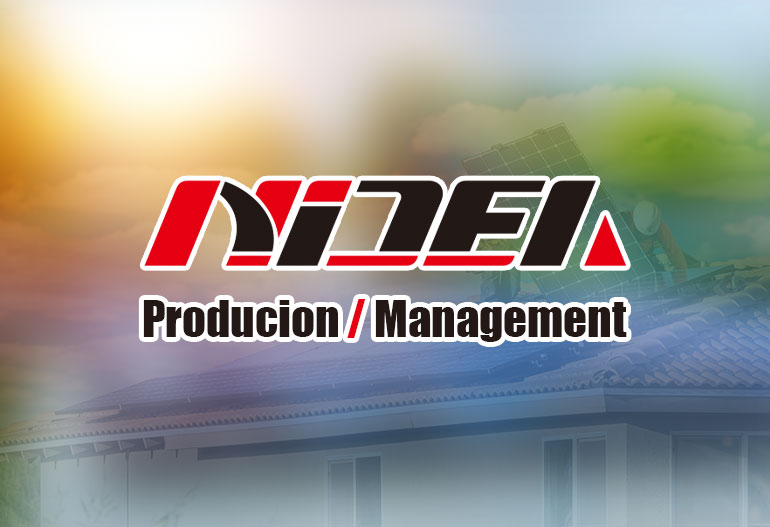Regular Maintenance and Servicing Guidelines for Modular UPS Power Modules
Power Conversion Stage: Rectifiers (AC-to-DC) and inverters (DC-to-AC) using high-frequency semiconductors (e.g., SiC MOSFETs) for efficient energy conversion.
Battery Interface: A charger circuit to maintain backup batteries and a transfer switch for seamless 切换 between grid and battery power.
Cooling System: Fans or heat sinks to dissipate heat generated by power electronics (operating temperatures often reach 40–60°C).
Control Board: Sensors (voltage, current, temperature) and microprocessors for monitoring and communicating with the UPS system controller.
Thermal Cycling: Daily temperature fluctuations cause expansion and contraction of components, weakening solder joints and insulation.
Electrical Stress: Transient voltages, harmonic currents, and load spikes degrade capacitors and semiconductors over time.
Contamination: Dust and debris accumulate on cooling surfaces, reducing heat dissipation efficiency and increasing fire risk.
Module Status: Ensure all modules are in "active" mode (not bypassed or faulted). A sudden shift to "standby" may indicate a hidden fault.
Temperature: Individual module temperatures should remain within 30–55°C. Sustained readings above 60°C signal cooling system issues.
Load Distribution: Each module should carry a balanced share of the total load (±5% of the average). Persistent imbalance suggests a failing current sensor or control board.
Efficiency: Track conversion efficiency (should exceed 94% at 50–75% load). A 2% drop over 3 months indicates component degradation.
Over-temperature: Check cooling fans and air filters; reduce module load temporarily.
Current Imbalance: Run a load test to isolate the faulty module; avoid bypassing unless necessary.
Communication Loss: Verify network connections; reset the module if software reboots fail.
Alarms and Indicators: Check front-panel LEDs or LCD displays for fault codes (e.g., red blinking for overheating, amber for communication failure).
Physical Damage: Look for bulging capacitors, burnt marks on PCBs, or loose connectors—common signs of impending failure.
Noise and Vibration: Unusual humming (from transformers) or rattling (from loose fans) indicates internal issues.
Safety First:
Put on ESD (electrostatic discharge) gloves and a grounded wrist strap.
Deactivate the module via the UPS controller (place it in "maintenance bypass" to avoid load interruption).
Disconnect the module from the bus bars if required by the manufacturer (e.g., for hot-swappable designs).
External Cleaning:
Wipe the module exterior with a dry microfiber cloth to remove dust.
Vacuum air intake/exhaust grilles using a soft brush attachment (avoid compressed air, which can push dust deeper into components).
Internal Cleaning (for qualified technicians):
Remove the top cover using manufacturer-specified tools (typically Torx screws to prevent tampering).
Use a HEPA-filtered vacuum to clean dust from heat sinks, fans, and PCB surfaces.
Inspect for corrosion on copper bus bars; clean with isopropyl alcohol and a lint-free cloth if needed.
Fan Maintenance:
Spin fan blades manually to check for obstruction or bearing wear (grinding sounds indicate the need for replacement).
Verify fan operation by reactivating the module in test mode; ensure airflow is consistent (measure with an anemometer: typical rates are 20–30 CFM).
Objective: Verify the module can deliver rated power without voltage fluctuations or overheating.
Procedure:
Connect a resistive load bank to the UPS output (sized to 100% of module capacity).
Isolate the module under test (ensure others remain in service to maintain redundancy).
Gradually increase load from 0% to 100% over 10 minutes, monitoring output voltage (±1% of nominal) and frequency (±0.5 Hz).
Hold 100% load for 30 minutes; check module temperature (should not exceed 65°C).
Objective: Confirm the module can switch to battery power and recharge batteries correctly.
Procedure:
Initiate a manual battery test via the UPS controller.
Verify the module switches to battery within 2 ms (use an oscilloscope to measure transition time).
Monitor battery charging after the test: voltage should rise to 2.25 V/cell (for lead-acid) within 2 hours.
Objective: Ensure the module coordinates with others in parallel operation.
Procedure:
Check load sharing across modules (imbalance should be <3% under test load).
Simulate a fault in one module; confirm others absorb the load within 50 ms without voltage dip.
Capacitors: Check for bulging, leaking electrolyte, or discoloration (common failure points after 5–7 years).
Semiconductors: Use thermal imaging to detect hotspots on rectifier/inverter PCBs (indicative of degraded devices).
Connectors and Solder Joints: Inspect for corrosion, oxidation, or cracks (reflow solder if necessary).
Insulation Resistance: Test with a megohmmeter (≥100 MΩ between live parts and chassis at 500 V DC).
Firmware Updates: Install manufacturer-released updates to address bugs, improve efficiency, or add new features (e.g., enhanced load balancing).
Sensor Calibration: Recalibrate voltage, current, and temperature sensors to ensure measurement accuracy (drift of >2% can trigger false alarms).
Fan Replacement: Even functional fans should be replaced every 3–5 years to prevent unexpected failure (bearings degrade over time).
Heat Sink Treatment: Apply fresh thermal paste to interfaces between semiconductors and heat sinks (reduces thermal resistance by 30%).
Age: Replace modules after 7–10 years (or as specified by the manufacturer), even if functional—capacitors and semiconductors degrade predictably.
Failure Frequency: A module with 3+ faults in 1 year (e.g., overheating, communication errors) is more likely to fail catastrophically.
Efficiency Drop: A sustained efficiency decline of >5% (e.g., from 96% to 91%) indicates irreversible component degradation.
Cost of Repair: If repair costs exceed 50% of a new module, replacement is economically justified.
Lockout/Tagout (LOTO): Disconnect the module from all power sources and secure with a lockout device; verify voltage is zero with a multimeter.
ESD Protection: Use grounded mats, gloves, and tools to prevent electrostatic discharge (can damage sensitive semiconductors).
Training: Only certified technicians should perform internal inspections or component replacements.
Documentation: Log all maintenance activities, including test results and replaced parts, for compliance with industry standards (e.g., ISO 9001, TIA-942).

